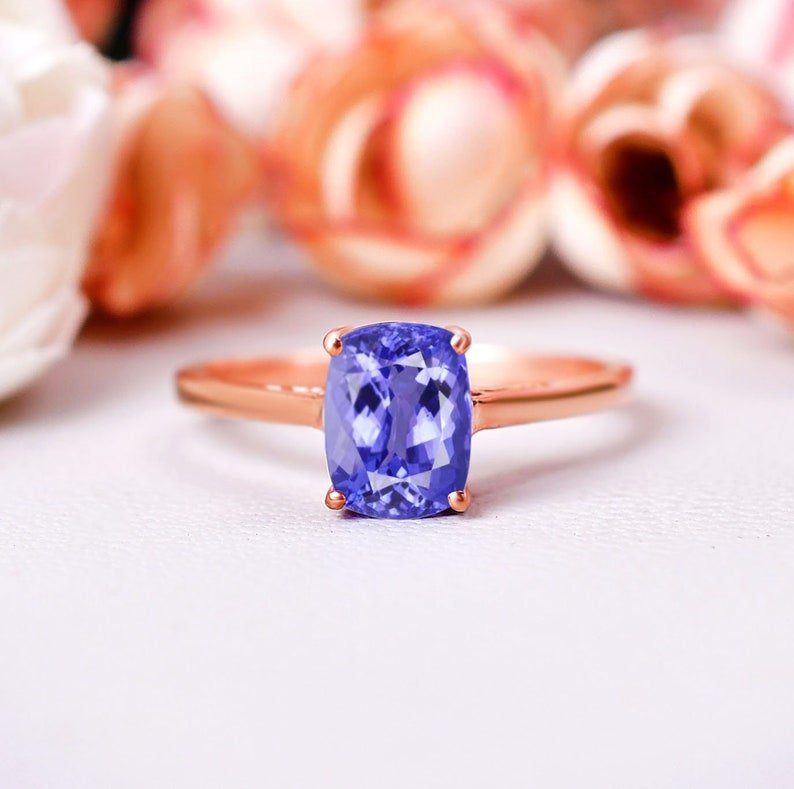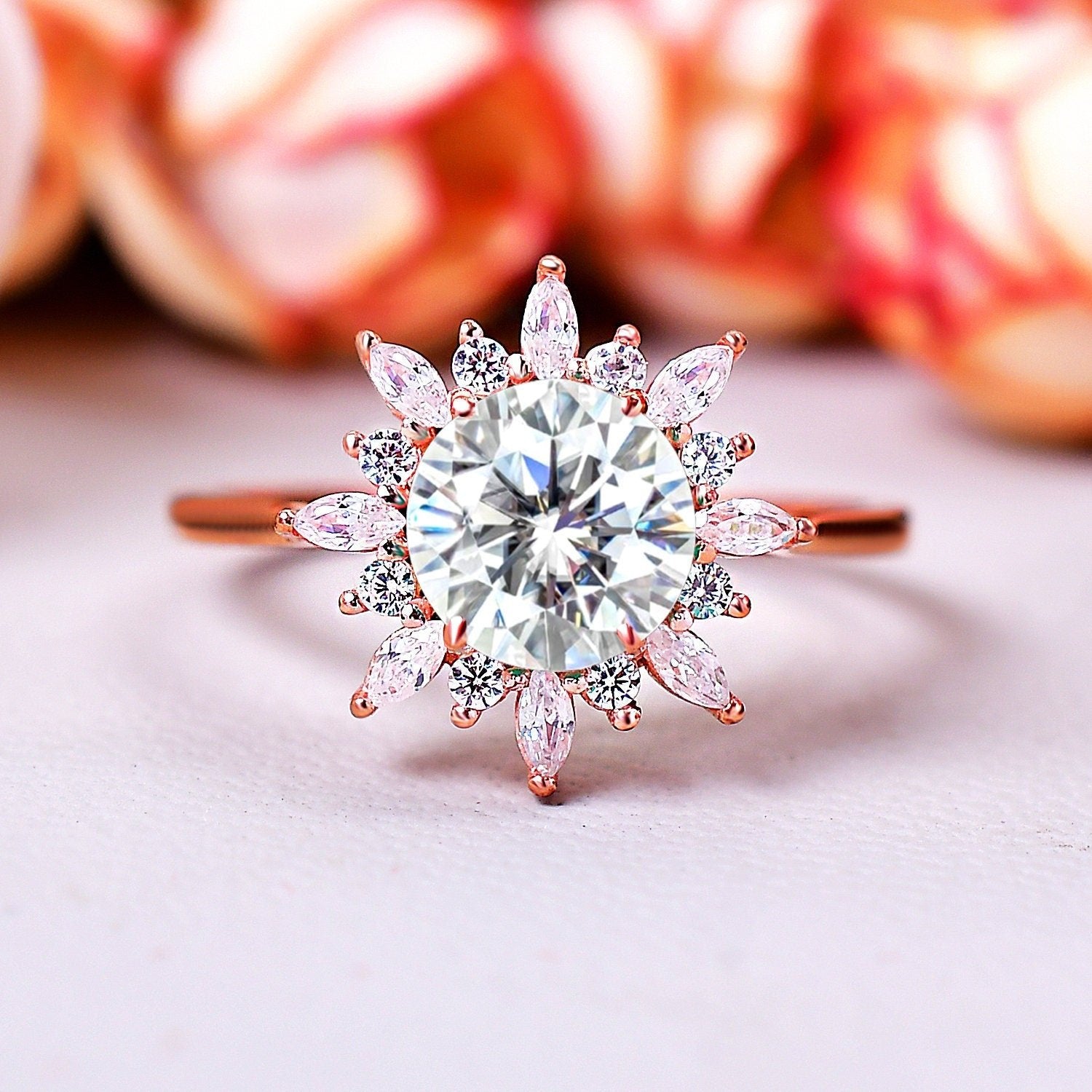Why Should You Add Purple Gemstones, Magical Stones, to the Jewelry Box?
Share

Ever find yourself staring at a purple gemstone and wondering, “What is it about this color that feels so… magical?” You're not alone. Purple gemstones have long been associated with royalty, spirituality, and mystery. In fact, purple dye was once so rare and expensive that only the elite could afford it, making purple gemstones a symbol of wealth and power.
The global gemstone market was worth a jaw-dropping $33.2 billion in 2023, and it’s growing at a steady 6% each year. Clearly, we’re all a little obsessed with these sparkly treasures.
Is it just the color, or is there more happening? Is it just the color, or is there something deeper going on? Let’s talk everything about purple gemstones.
Why Are Purple Stones so Appealing?
Purple is more than a color. It’s the color of royalty, mystery, and a little bit of magic. Historically, purple dye was super expensive, so only kings, queens, and high priests could afford it. Maybe that’s why, even today, purple gemstones feel a bit more special than your average stone.
But there’s more to it than just history. Purple stones are believed to help with everything from spiritual growth to emotional healing. Some folks even say they can help you sleep better or kick stress to the curb. Whether you believe in that or not, there’s no denying that purple gemstones have a certain energy about them.
Types of Purple Gemstones
When most people think of a purple gemstone, their mind immediately jumps to amethyst. There’s a whole world of purple gemstones out there, and each one has its own personality. Let’s break down some of the most popular stone
1. Amethyst: The Classic
If you ask someone to name a purple gemstone, they’ll probably say amethyst. It's the February birthstone and comes in a variety of hues, from pale lilac to deep, almost wine-colored purple.
Amethyst is loved for its beauty, affordability, and durability. It scores a 7 on the Mohs scale, so it’s tough enough for everyday wear. Plus, it’s everywhere, from delicate earrings to chunky statement rings.
Also Read: Our blog post on Black Sapphire Gemstone
2. Tanzanite: The Rare Beauty
Tanzanite is a fairly new stone, only found in the 1960s near Mount Kilimanjaro in Tanzania. What makes it special? It shifts from blue to violet depending on the light. Tanzanite is rare and usually reserved for luxury pieces, but if you want something unique, this is a top pick.
3. Purple Sapphire: Tough and Elegant
Sapphires aren’t just blue; some are a fabulous purple from the addition of iron, titanium, and chromium into the mix. Purple sapphires are rare, and many are heat-treated to turn them pink. But if you find a natural purple sapphire, you’ve got something truly special. They’re also super durable with Mohs 9, so they’re perfect for rings and bracelets.
4. Purple Tourmaline: Affordable and Awesome
Tourmaline comes in just about every color, including bright purple. It's also cheaper than some of the other ones and you often see a purple tourmaline in October birthstone jewelry. Some purple tourmalines have some cool cat's eye effect too.
5. Kunzite: The Delicate Violet
Kunzite is a variety of spodumene that sometimes shows a beautiful violet-purple color. Not as popular, but collectors love it. One thing to know: kunzite’s color can fade if it gets too much sun, so it’s best for evening wear or special occasions.
Read More: Our blog post on Cancer Birthstone Guide
6. Sugilite: The Opaque Statement
Sugilite isn’t transparent like most gems. Instead, it’s a strong, opaque purple with streaks of red, blue, or even black. It’s usually cut into cabochons or beads and is a favorite among crystal lovers for its bold look.
7. Charoite and Scapolite: The Underdogs
Charoite is a trippy, swirling, lavender gem found in Russia, while scapolite is a softer gem that may glow in a UV light. Both are a bit niche but worth checking out if you want something different.
Also Check: Our blog post on 20 Blue Gemstones
What Does a Purple Gemstone Mean?
Every purple gemstone has its own degrees of meaning and associations. Here's a brief overview:
Inner Peace and Comfort
Many people purchase a purple stone like amethyst for comfort during rough times. Such stones are said to assist the wearer in transitioning through grief and trauma. You could think of it as a "support" or "ghost" stone. If you are navigating the experience of grief or other trauma, wearing, or holding, a purple gemstone could offer a little bit of a ground anchor to the wearer.
Spiritual Growth
Purple is the color of spirituality, and spiritual consciousness. Accordingly, many people will use purple gemstones when meditating or praying to help deepen the connection to the divine and heighten the access to wisdom from within. If meditation or mindful practices are part of what you do, for example, if yoga is part of your routine, then a purple stone could be a valuable new friend.
Healing and Protection
Some may say that multiple purple stones can help with physical things, like insomnia, stress, and migraines. They may, or may not, provide a calmer type of energy that helps the physical body, and mind, hopefully, calm down! Just like the metaphysical element; you cannot discount the calming insight of gazing into a lovely purple gem!
Courage and Change
Purple gemstones are often described as a stone of change. They help you see where you've become stuck in old patterns, face your fears, and to take a chance on trusting that everything will be fine. Change is trusting yourself and your process.
Check Out: Our blog post on Top 20 Pink Gemstones
How to Choose the Right Purple Gemstone
Now that you've learned a little about the wonderful variety of purple gemstones and what each of them means. How do you find the right one for you?
To begin with, it really just comes down to what you are drawn to. Do you like the rich, deep-purple beauty of an amethyst, or do you appreciate the beautiful sparkle of a tanzanite? Or do you like the psychedelic movement of charoite? There is no right and wrong in your choice here. Ultimately the process is about your connection.
Think about what meaning resonates with you most. Are you looking for a stone to aid in meditation or something to bring a sense of calm to your busy day? Maybe you need a boost of creativity. Knowing your intention can help guide your choice.
When you’re looking at these stones, don’t be afraid to ask questions. A reputable jeweler or gem dealer will be happy to tell you about the origin of the stone, its properties, and any treatments it might have undergone. For example, did you know that most tanzanite is heat-treated to bring out its vibrant blue-violet color? This is a common and accepted practice in the industry.
In the end, it is about finding a piece, of any kind, that speaks to you, whether it be for its pleasing color, its various and alleged energetic properties, or just how it makes you feel when you wear it. Isn't that what pieces of jewelry should do for us?
FAQs
Q1. Which gemstone is colored purple?
Most people think of amethyst—it’s the classic purple. There are also purple sapphire, charoite and spinel. Each has its own tone, personality, and level of rareness.
Q2. Which rashi can wear purple stones?
Primarily, purple stones like amethyst are recommended for Kumbh (Aquarius) and Meen (Pisces) rashis. As a general rule though, if the energy feels right, many people across all signs wear it for calm and clarity.
Q3. What are the names of purple crystals?
You have an array of purple crystals—amethyst, lepidolite, charoite, sugilite and fluorite. They all have various shades of purple, from light lilac to intense royal. And each crystal has its own unique history.
Q4. Is purple crystal rare?
Some are rare and some are not. Amethyst is common and highly accessible; however, rarer and more expensive, considered rarer, are sugilite and taaffeite for example, this all depends on what mineral and its origins.
Q5. Is amethyst valuable?
It's valuable, but not extremely expensive. Other than a top-grade amethyst or one that was significantly big, the price is generally affordable. However, people typically find this mineral important due to the energy and beauty of it, rather than its price.



